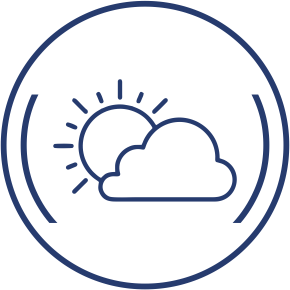
What is the weather like and when?
The Northwest region and in particular Salta Province has two different seasons: the dry season starting from mid- April to the end of November, and the wet season from the end of November to the first part of April.
During the dry season it is very rare to have rain in the Salta region. The temperature varies according to the altitude. In Salta City, Quebradas (Ravines/Gorges) and Valleys, during the coldest days (June to August) the temperature is around 8/10 degrees Celsius during the daytime and 0 degrees Celsius during the night. The average temperature is 15/25 degrees Celsius during the day time and 5/15 at night.
In the High Plateau Desert (Puna), the coldest days (June to August) are around 5/10 degrees Celsius during the daytime and -15 degrees Celsius with only 15% humidity, so extremely dry, at night; however we always sleep in well heated hotels or lodges. The average temperature is 10/20 degrees Celsius during the day and -5/5 during the night.
PROS of traveling during the dry season: sunny weather, no rain, perfect road conditions. CONS of traveling during the dry season: cold temperature at high altitude (Puna), possible road closures due to snow or strong wind.
During the wet season it rains especially in Salta City and in the Valleys that connect Salta City to Cachi, Cafayate, Quebrada de Humahuaca and the Puna. Temperature varies in function of the altitude. In Salta, Quebradas (Ravines) and Valleys, the average temperature is 25/35 degrees Celsius during the day time and 18/22 during the night. In the High Plateau Desert (Puna), the average temperature is 20/25 degrees Celsius during the day and -10/15 during the night.
PROS of traveling during the wet season: rains and tropical storms which are an amazing natural wonder. It is the best moment to experience great sunsets and nature is at its apex, displaying its most powerful colors, with an abundance of luscious greenery, especially in Salta Valley.
CONS of traveling during the wet season: you will normally experience some showers and rain. Roads can sometimes be closed due to heavy rains that could affect river beds across the roads. For this reason we recommend traveling with our Guide/Driver and 4×4. For self-drive tours, it is highly recommended to rent a 4×4 car including a professional briefing before departure, for river crossing and passing muddy banks.




